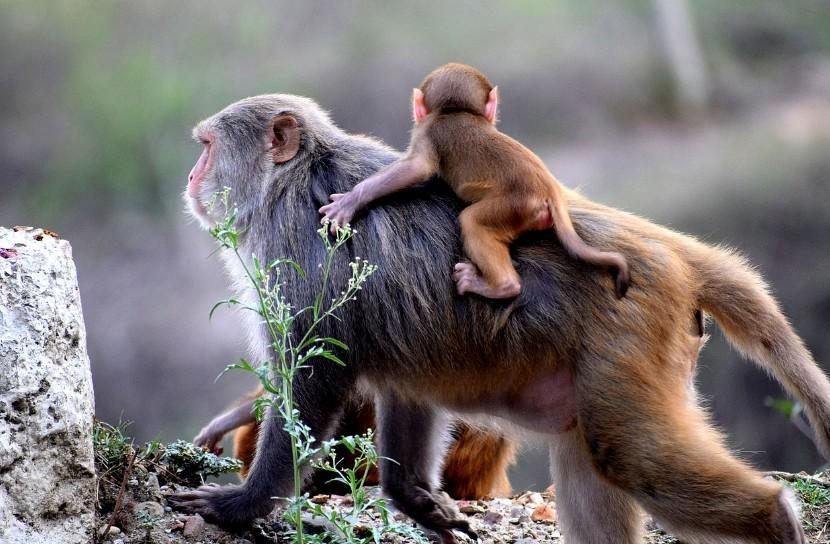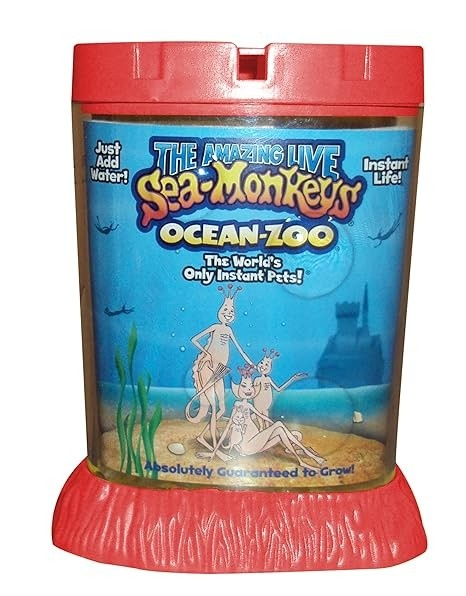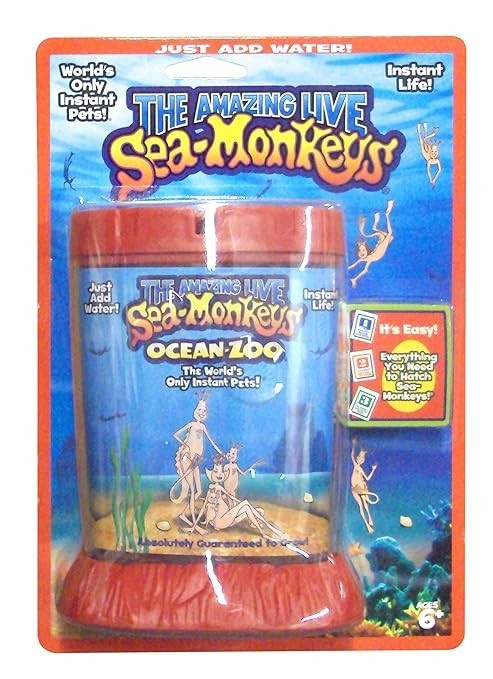If you’ve been in a toy store, browsed a catalog, or flipped through a 1960s comic book, you’ve seen Sea Monkeys. Their playful name and magical nature have captivated generations. But what exactly are Sea Monkeys? How do they live, grow, breed, and survive? And what makes them so special that they have been an integral part of pop culture for decades?
Sea Monkeys are more than quirky pets. They are small wonders of nature and science in a mystical package. Let’s dive into the world of Sea Monkeys. We’ll explore their mysterious origins and the secrets of their survival and growth. We’ll also look at their reproduction. Whether you’re a Sea Monkey fan or curious, there is always more to learn about these creatures!
What are sea monkeys?
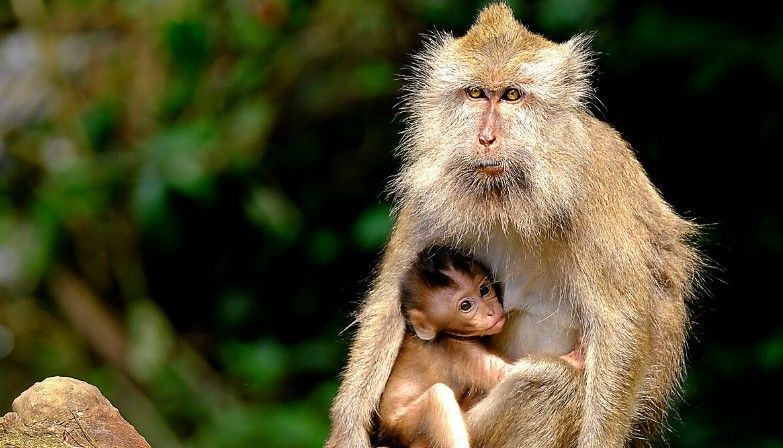
They might sound like an exotic creature from the deep ocean. But the truth is more shocking than that. Sea Monkeys, despite their whimsical names, are a type of brine shrimp. They are the species Artemia salina. These tiny crustaceans live in salty waters, like saltwater lakes and coastal areas. You can find them worldwide. But the Sea Monkeys you see now are some of the product of very clever human manipulation.
Artemia is a genus of small, hardy shrimp. For centuries, aquaculture has used them to feed larger fish and other sea animals. But the Sea Monkeys we are familiar with today aren’t exactly the same as wild brine shrimp. People bred and sold these creatures. They thrived in unusual environments. Manufacturers included the small plastic tanks that they would sell in kits.
Sea Monkeys differ from their wild counterparts. They can survive in some of the most extreme conditions. Brine shrimp can survive in waters with high salinity. But, Sea Monkeys were selectively bred to show greater resilience. Due to the above traits, Sea Monkeys can thrive in low-oxygen, nutrient-poor environments. They do well even when almost dehydrated. This will be key as we explore Sea Monkey biology.
The Thrilling Science Behind Sea Monkey Eggs
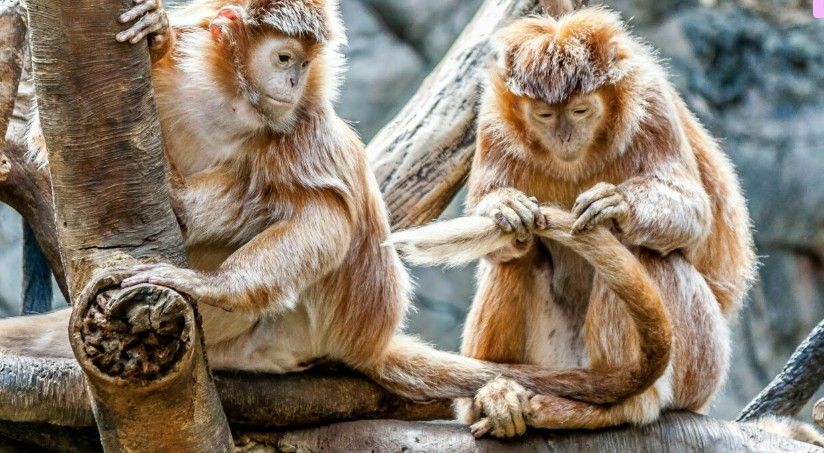
Sea Monkeys can endure extreme conditions, even complete dehydration. That’s amazing. This is due to a process called cryptobiosis. In this state, an organism’s metabolism is off. They can sleep for a long time, even for years in some cases!
If you buy a Sea Monkey kit, these hardy little creatures will arrive to you as eggs, called cysts. Cysts can survive extreme temperatures and a lack of moisture. If left in water, they awaken and hatch into tiny, mobile organisms. This is one of the features of Sea Monkeys that most amazes people.
Once hydrated, the eggs hatch into microscopic larvae, called nauplii. They grow into the adult brine shrimp that people know as Sea Monkeys. But that’s not all. Sea Monkey eggs can survive in a dormant state for years, sometimes even in space! Scientists have studied their cryptobiosis. This work aims to preserve biological samples, food, and human cells.
Scientists have long been intrigued by cryptobiosis. They have used brine shrimp and tardigrades (water bears) to study this survival mechanism. For humans, reviving “life” from a dormant state offers many chances. It could benefit space travel, long-term biological preservation, and conservation efforts.
How Do Sea Monkey Eggs Survive Dormancy?
Sea Monkeys have eggs that are protected by a special coating. They can survive in a dormant state for very long periods. This is a survival mechanism to enable them to survive severe environmental conditions. The eggs can stay viable in the wild for years or even decades until they experience the right conditions to hatch.
Sea Monkey eggs can survive dehydration, freezing, and even radiation. They are so impressive that they have been sent into space in scientific experiments. Such experiments aim to understand how living organisms react to the hostile outer space environment. Sea Monkey eggs are very useful for studying biological preservation techniques.
The Sea Monkey eggs have a special coating. It contains proteins that let them survive radiation, extreme dryness, and even freezing. It is such enormous resilience that makes them the latest favorite subject of scientific study. Researchers believe that studying Sea Monkey eggs can help. They survive extreme conditions. This could aid in long-term storage of human organs and other biological materials. Somehow, Sea Monkey eggs come out as nature’s most excellent version of cryogenic preservation.
Big Time Toys Sea Monkeys Ocean Zoo Deluxe Kit - Multi-Color, Rust-Resistant, Pack of
| Size | standard |
| Brand | Big Time Toys |
| Age Range (Description) | Kid |
| Item dimensions L x W x H | 7.6 x 16.8 x 24.1 Centimeters |
| Item Weight | 136 Grams |
About this item
The original amazing live sea monkeys a classic set to create your very own adorable Aqua-Pets The plastic aquarium is equipped with a ventilated lid built-in magnifiers and molded seascape bottom
The History and Origins of Sea Monkeys
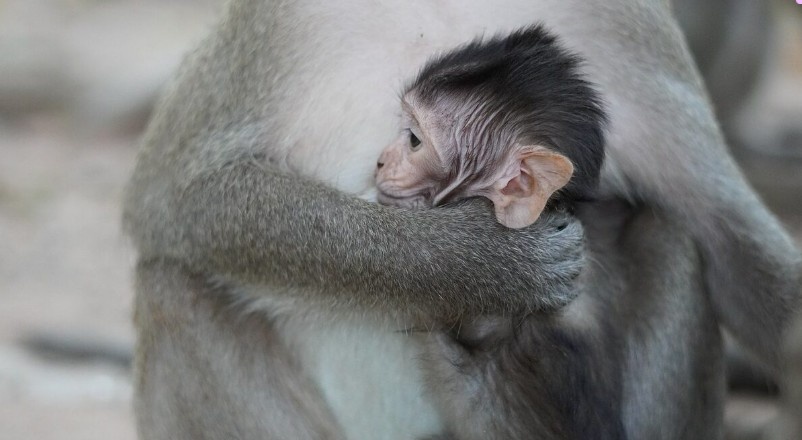
The journey of Sea Monkeys from obscure brine shrimp to popular novelty pets began in the 1950s thanks to the vision of one man: Harold von Braunhut. An inventor and entrepreneur, von Braunhut was a marketing genius, and he saw an opportunity to create a product that could be a combination of science, novelty, and fun.
In 1957, von Braunhut collaborated with marine biologist Dr. D’Agostino. They developed a brine shrimp strain that could survive in abnormal conditions. It was for the small plastic tanks that would be sold as Sea Monkey kits. Years of work were spent perfecting the process. Together, they produced a hardy strain of Artemia that would hatch quickly and grow in a sealed tank.
The marketing genius of Von Braunhut is what Sea Monkey is most famous for. He sold them as something akin to “instant life,” making anyone believe they could have their very own tiny, exotic pets by merely adding some water. Naming it a “Sea Monkey” was pure genius-a mythical sea creature and a great term, even if the creature, brine shrimp, was nothing of the sort.
The first Sea Monkey kit was sold in comic book ads in the 1960s. They hooked both kids and adults. The ads told a story of magical creatures that came to life with just water. That’s when the real craze began. It became incredibly popular in the young collectors when these kits containing the eggs, a small tank, and food came in.
Actually, the feature that set Sea Monkeys from every other fad pet was capturing imaginations. They were very unique in terms of the mystic origins and mysterious lifecycle plus the “magic” to rev up from nothing from a small container of water, making it impossible to ignore. Even today, this remains a very popular Sea Monkey brand for over 60 years ago as fun and educational nostalgia for most hobbyists.
Can you get Sea Monkeys in India?
Yes, you can buy Sea Monkeys kits online in India on platforms like Amazon.
How long do Sea Monkeys survive without food?
Sea Monkeys can survive a few days without food, but if you neglect them for an extended period, it will cut short their life.
Are Sea Monkeys living creatures?
Yes, Sea Monkeys are living creatures. They are a form of brine shrimp, an aquatic crustacean.
What do people use Sea Monkeys for?
Sea Monkeys are mainly kept as pets for educational and entertainment purposes.
Do Sea Monkeys come out of the shell fully grown?
No, Sea Monkeys come out as very small nauplii and grow up in about 4-6 weeks.
How long do Sea Monkeys live?
Sea Monkeys average 1-2 years, though they can live longer under ideal conditions.
What happens to dead Sea Monkeys?
When Sea Monkeys die, you can remove them from the tank or leave them to decompose naturally, which may provide nutrients for the remaining population.
Do Sea Monkeys reproduce?
Yes, Sea Monkeys do breed under certain conditions; either way, it could either lay eggs or through live births
Does the Sea Monkey require light?
Yes, because the presence of light grows algae inside the tank where the Sea Monkey may feed and will make them active.
20. Does the Sea Monkey survive tap water?
Sea Monkeys require purified or distilled water since the presence of tap water might have dangerous chemicals.
How Do Sea Monkeys Grow?
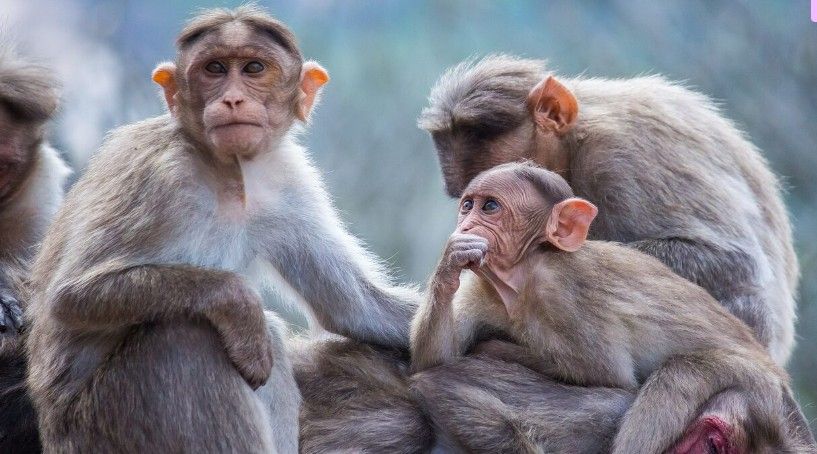
Sea Monkeys grow from almost invisible eggs into active, full-sized creatures. It’s an interesting process. Once you add the Sea Monkey eggs to water, the transformation begins. The creatures mature in several stages. You can witness the whole process firsthand.
1. Nauplius (Larval Stage)
The magic begins when you add the Sea Monkey eggs to the water. These eggs, or cysts, have been dormant, waiting for the right conditions to hatch. When placed in water, they undergo hydration, and the cysts hatch into nauplii, the first stage of life for Sea Monkeys.
- Size and Appearance: Nauplii are small-about 0.2 to 0.3 millimeters long-and nearly invisible to the naked eye. At this stage, they appear as small dots, often needing a magnifying glass or microscope to be viewed clearly.
- Behavior: The nauplii swim in jerky movements while looking for food. They filter small particles such as algae and plankton from the water by using their feathery legs.
- Development: This stage takes anywhere from several days to a week. It depends on the factors such as temperature and availability of food. As the nauplii grow, they have more defined body structures.
2. Juvenile Stage
As the nauplii grow, they enter the juvenile stage. This is when their bodies start looking like adult Sea Monkeys, and they become very active.
- Size and Appearance: Sea Monkeys at this stage are approximately 3 to 5 millimeters long. Their bodies extend, and they have more noticeable appendages to swim better.
- Feeding: They have already become better hunters. They go around looking for food and swim around using their feathery appendages to trap particles floating in the water.
- Molting: As they age, the Sea Monkeys undergo molting. They shed the exoskeleton several times as it grows. Every molt brings it closer to the adult stage.
This stage takes a few weeks to a month. As they grow, their organs become more complex. So, they have advanced ways of getting food.
3. Adult Stage
Once the Sea Monkeys grow to their full size, they enter the adult stage and are ready to reproduce.
- Size and Appearance: The fully grown Sea Monkeys are about half an inch to three-quarters of an inch long (12-18 millimeters). They have long bodies, feathery appendages for swimming, and large antennae for navigation.
- Sexual Maturity: At this point, Sea Monkeys are sexually mature. Males are smaller with more prominent antennae, while females are larger and rounder, often carrying a brood sac filled with eggs.
- Behavior: Adult Sea Monkeys are always active. They swim in search of food and interact with each other. They are also capable of reproduction, ensuring that the cycle continues.
Environmental Influence on Growth
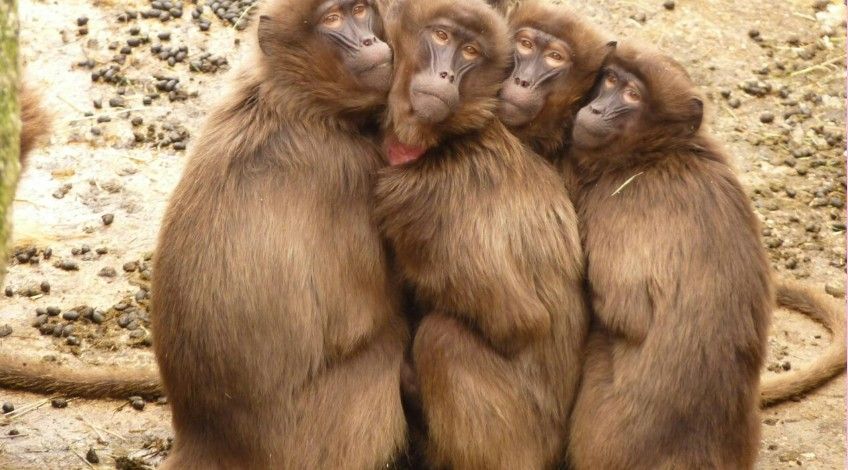
Sea Monkeys growth mainly depends on environmental factors. Such variables as temperature, water quality, and food availability play a vital role in their development.
Temperature: The ideal temperature for the growth of Sea Monkeys ranges between 72°F and 80°F (22°C to 27°C). Warmer water speeds up growth. But, too hot water stresses the creatures and shortens their lives.
Water Quality: The Sea Monkeys should have clean, well-oxygenated water. Poor quality will stunt their growth and makes them more susceptible to diseases.
Food Supply: They should always be fed since they need it constantly for them to grow and become healthy. Overfeeding would make the water cloudy; on the other hand, underfeeding will make their growth stunted, hence unhealthy.
Give optimal conditions to help Sea Monkeys grow rapidly and thrive well so you may see an entire life cycle of these aquatic pets.
Gender Differences of Sea Monkeys
Once the Sea Monkeys are grown up, you might be able to note a number of interesting gender differences among them.
Males: Generally, the male is smaller than female but possesses longer antennae which they employ for the search of the females to mate.
Females: Females are larger, with a rounded body and often carry a brood sac filled with fertilized eggs. These sacs can carry and protect their eggs until they are ready to hatch.
Interestingly, female Sea Monkeys can carry unfertilized eggs. They can stay dormant until conditions improve. This asexual reproduction helps ensure the species’ survival in changing environments.
Life Cycle of Sea Monkeys
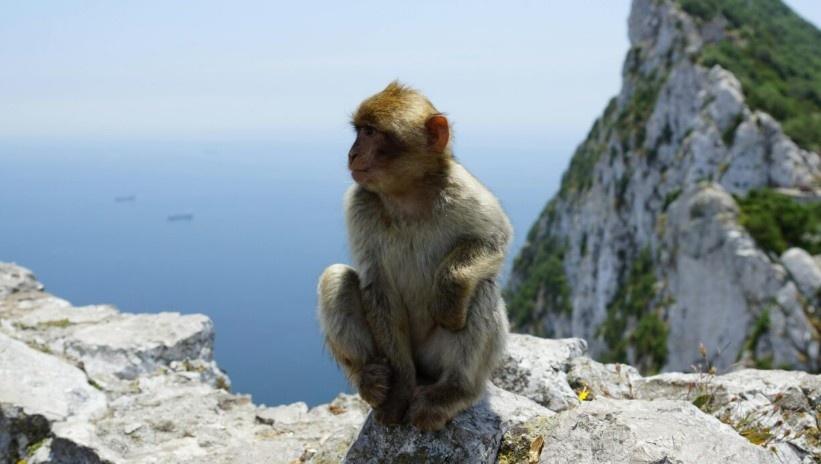
Sea Monkey life cycle is an incredibly process that may take weeks or even months depending on conditions. This process of their life takes the newly-hatched eggs through all stages. They molt, grow, and transform into fully reproductive adults. Meanwhile, a new batch of eggs ensures the cycle of subsequent generations.
How Long Do Sea Monkeys Live?
On average, Sea Monkeys live for about two years. However, their life span will depend on environmental factors. Under the best conditions—clean water, stable temperatures, and a steady food supply—Sea Monkeys can live for three years or more.
Do Sea Monkeys require a filter?
Sea Monkeys do not need a filter in their small aquarium, but they do need clean water. In fact, filters may disrupt their sensitive environment by stirring up sediment or making too much water movement. Sea Monkeys are so small and fragile that they do best in calm water; thus, a gentle aeration system would be more suitable to keep the oxygen levels adequate without causing them undue distress.
To maintain proper water quality, you should change their water regularly, ensuring it remains free from harmful bacteria or algae. It’s also vital to remove any leftover food or debris that may accumulate at the bottom of their tank. Regular cleaning can help reduce the risk of illness or contamination.
You can use a simple manual siphon or change a part of the water every few days to keep it fresh. It will not only keep Sea Monkeys longer, but it also promotes healthier environments for them to grow in.
Additionally, remember that Sea Monkeys require specific water conditions. Tap water, for example, may contain chemicals such as chlorine or chloramine that are harmful to them. To avoid this, always purify the water or use distilled water when setting up your Sea Monkey tank. In this way, maintaining the water’s health and cleanliness will keep your Sea Monkeys happy and thriving without needing a filter.
Why are Sea Monkeys special?
Sea Monkeys are unique creatures because they can survive in arduous conditions through an extraordinary method called cryptobiosis. What this means is that, under this exceptional survival technique, Sea Monkey eggs may enter a type of suspended animation, permitting them to survive for years—decades even—without water or nourishment. The eggs can wait this long time for the right surroundings to hatch.
These dormant eggs “come to life” and hatch into tiny larvae when placed in water. The ability of Sea Monkeys to survive extreme dehydration is what makes them a fantastic subject of study in biology, as they do not follow the usual limits of survival. They can endure desiccation, or drying out, for an extended time and revive once they are rehydrated, that is why they are mostly sold in kits as pets.
Raising Sea Monkeys is one full procedure for seeing them hatch and grow in real-time. In just days, you will see tiny creatures swimming out of the egg that appears to be lifeless. This special survival trait has made them so popular as novelty pets but equally useful in science classrooms or used educationally.
Their cryptobiotic abilities make the Sea Monkeys quite exceptional among other pets. They are not demanding pets; in fact, they require almost no care at all provided you give them clean water and food. Such simple care combined with their amazing life cycle has captured the imagination of generations of children and adults.
Can Sea Monkeys be touched?
Sea Monkeys are marketed as interactive and fun pets, but they are incredibly sensitive creatures. Because of their tiny size and delicate exoskeletons, it is not advisable to touch them because it might hurt or even kill them. These creatures are very fragile, and their small bodies make them vulnerable to external pressures. Touching them may cause undue stress and possibly damage their small, delicate bodies, which may lead to a shortened lifespan or death.
The best way to play with Sea Monkeys is observation. Watch how they grow and swim; this will bring you a rewarding, even mesmerizing experience while they get along in their tiny watery world. You may feed them and maintain the clean environment surrounding them, but not by directly handling them.
The size of the Sea Monkeys is such that it is almost impossible to handle them without causing some damage. Even the slightest pressure or contact with the body could cause injury, so it is better to maintain their environment and appreciate them in their natural behaviors at a distance.
So while Sea Monkeys may seem like fun, interactive pets, they require minimal human intervention beyond ensuring their tank is clean, their water is purified, and they are fed properly.
Are Sea Monkeys a type of shrimp?
Yes, Sea Monkeys are a variety of brine shrimp, a type of small crustacean closely related to other shrimps and lobsters. The Artemia salina name appears with them, and mostly salt lakes and brine pools can be their habitats. A marketing name, in the case of Sea Monkeys, refers to these Artemia salina species, which have specifically bred over time for their properties when rearing into hatch and growth stages at little water tanks under controlled and scientific research conditions.
Although Sea Monkeys are technically brine shrimp, they differ slightly from regular shrimp species due to their small size, which makes them well-suited to live in miniature aquariums and be raised as pets. Unlike larger shrimp, which require more significant aquatic setups, Sea Monkeys can thrive in small tanks provided the water conditions are right.
Their appearance, which includes a long tail and legs that allow them to swim gracefully, makes them look like other types of shrimp. However, the Sea Monkeys’ ability to enter a dormant state and revive after years without water sets them apart from other brine shrimp. This survival ability is one of the reasons Sea Monkeys have captured the attention of pet lovers and science enthusiasts.
How big do Sea Monkeys get?
Sea Monkeys reach a maximum size of about 1/2 to 3/4 inches (1.2 to 1.9 cm) in length. They begin their life as tiny eggs, so small that they are nearly invisible to the naked eye. When they hatch, they are only a few millimeters in length, making them appear even smaller than they actually are.
As Sea Monkeys grow, they gradually develop their recognizable long tails and limbs. Although they are small, they exhibit a wide range of behaviors, such as swimming, eating, and interacting with each other. As they mature, they become more noticeable in their tanks, allowing owners to observe their fascinating life cycle up close.
Although their size is minuscule compared to other pets, the ability of Sea Monkeys to grow from such a small egg to adult size in just weeks is very appealing. They are quite low-maintenance pets and, because of their small size, are ideal for observation in a small aquarium, which is why they make such popular novelty pets.
While their size may not be intimidating, still, watching them grow is an exciting process. Within weeks, you can observe that these small creatures are transformed into adult Sea Monkeys, thus making it both educational and engaging.
Breeding Sea Monkeys: The Magic of Reproduction
One of the fascinating aspects of keeping Sea Monkeys is getting to experience their reproduction process in person. This way in which these tiny creatures continue their species is not only interesting but an important part of their life cycle. The breeding process of Sea Monkeys is pretty simple, but the way they are bred often happens naturally in the right conditions. The Sea Monkey’s reproduction method fascinates the imagination. It lets them thrive in very hostile environments.
Sexual and Asexual Reproduction
Sea Monkeys can reproduce both sexually and asexually. This ensures their survival in many environments. Sexual reproduction means male and female Sea Monkeys must mate to create fertilized eggs. But, the species has an amazing survival tool: asexual reproduction. Females can produce eggs without fertilization. This process helps them survive in harsh conditions.
Sexual Reproduction:
Sea Monkeys reproduce sexually in a stable environment. The males use the longer antennae to identify females, and once they identify them, the mating procedure begins. The males fertilize eggs that the females carry in a special pouch called a brood sac in their bodies for protection until they are due to hatch. The female lays these eggs, which are encased in an outer protective shell after fertilization. These fertilized eggs may then go dormant for some time. This would ensure that the Sea Monkey population survives longer when the environment is not optimal.
Reproduction by Parthenogenesis:
Under stress, like high water temperatures or low food, some Sea Monkey females may produce unfertilized eggs. Such eggs are called resting eggs or cysts, and these are especially crucial for survival. They can stay dormant for months or even years until they find favorable conditions again when they hatch and continue with the cycle. This asexual reproduction mode lets Sea Monkeys survive tough environments. It ensures their population can last over time.
The Reproduction Process
The reproductive process of Sea Monkeys starts when the females are fully mature and ready to mate. At this stage, the males actively seek out females using their antennae, which are more developed and longer than the antennae of the females. Male Sea Monkeys court females with a dance-like movement. They swim near the female, using their antennae to gently nudge her to mate.
Once the female has accepted the male, mating then takes place. The male would release his sperm that fertilizes eggs inside the female’s brood sac. The female then lays the fertilized eggs into the surrounding water. These eggs are usually small specks. They are sometimes visible to the naked eye, but a microscope is usually needed to see them clearly. The fertilized eggs are contained in a shell that can withstand harsh conditions until they hatch.
The amazing part of Sea Monkey reproduction lies in the great endurance the eggs possess. The laid eggs may survive in extreme cases: water dries up, extremely high salinity, and even freezing temperatures. It could survive months or even years based on the environment. Such survival mode is one part of its cryptobiosis, and it can withstand the fluctuation of extreme environmental changes.
Reproductive Cycle: Sea Monkeys reproduce both sexually and asexually. During the mating process, male Sea Monkeys fertilize the eggs of females, which then lay them. Females can produce eggs that, under stress, can remain dormant. They will hatch when conditions improve.
New Generation: The fertilized eggs are in protective shells. They can survive harsh environments. New generations of Sea Monkeys will emerge when conditions improve.
Final Thoughts: The Lasting Magic of Sea Monkeys
Sea Monkeys are more than a fad. They are proof of how life can thrive under the toughest conditions. The survival mechanisms of these creatures are quite incredible. Their life cycle is of great interest. As a couple, they are unique and long-lasting in the realms of biology and pop culture. Whether you are raising them for fun, education, or just out of curiosity, Sea Monkeys are a glimpse into the mysteries of life on Earth.
If you ever fantasized about raising your own Sea Monkeys, now is a good time to start doing it. With a little bit of care and the proper environment, you can see life evolve right before your eyes, and perhaps you’ll find little wonder in a small, plastic water tank.
What are Sea Monkeys?
Sea Monkeys are an example of brine shrimp (Artemia salina) that have been offered as a novelty pet. They are tiny crustaceans that come to life when their eggs are mixed with water.
What is a Sea Monkey?
A Sea Monkey is the hybrid breed of brine shrimp bred to make it easy to hatch and nurture as pets.
s Sea Monkey real?
Yes, Sea Monkeys are real living creatures. They are a special variety of brine shrimp.
What were Sea Monkeys?
Sea Monkeys were first introduced as a novelty pet in the 1950s and gained popularity for their unique ability to hatch from dried eggs when added to water.
How long do Sea Monkeys live?
Sea Monkeys can survive 1-2 years if cared for. However, their life may depend on the condition in which they are raised.
Are Sea Monkeys cruel?
Raising Sea Monkeys is not considered cruel if they are properly cared for, although it is questionable whether some would say it is ethical to raise them in small containers just for entertainment.
What do Sea Monkeys eat?
Sea Monkeys are fed a special powdered food that usually comes with the kits and is some sort of algae or yeast.
Are Sea Monkeys good pets?
Sea Monkeys make good pets for those interested in low-maintenance yet interesting creatures to observe.
Are Sea Monkeys living or non-living?
Sea Monkeys are living organisms which develop from the resting eggs upon being placed into water.
What is a Sea Monkeys kit?
A Sea Monkeys kit is a pack, usually including dried eggs, water purifier, food, and instructions for the raising of Sea Monkeys.

